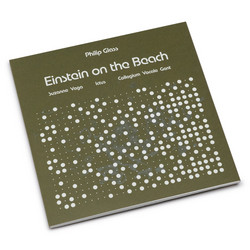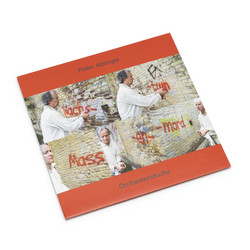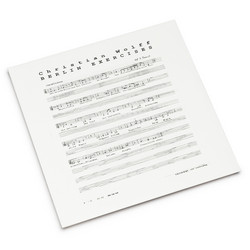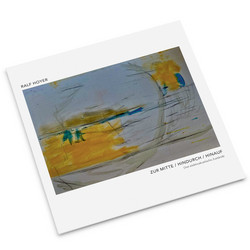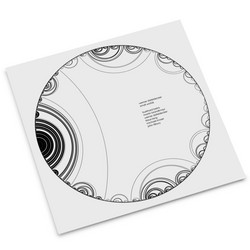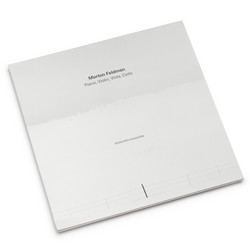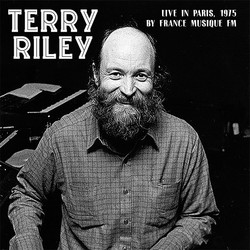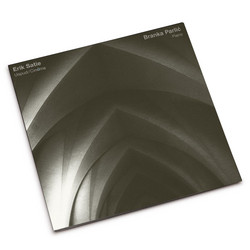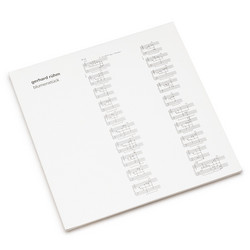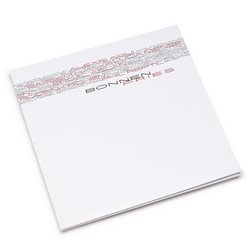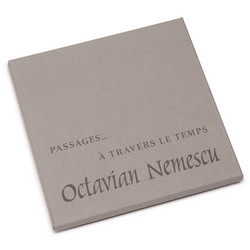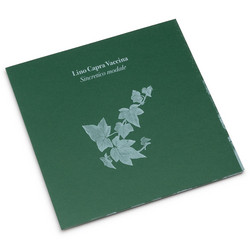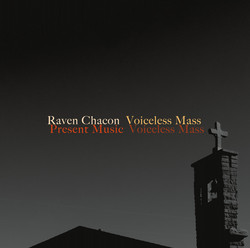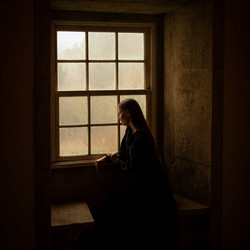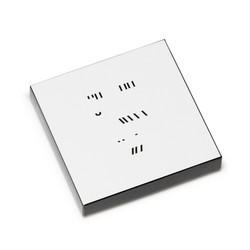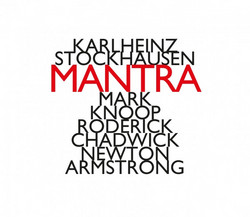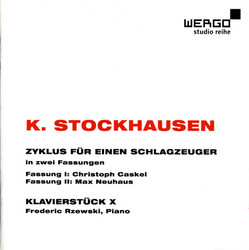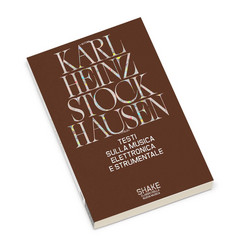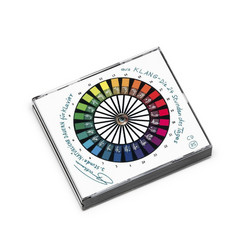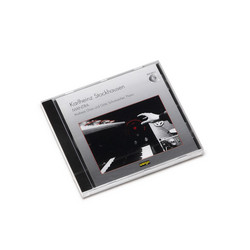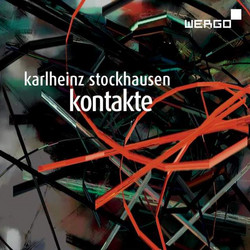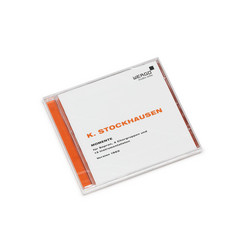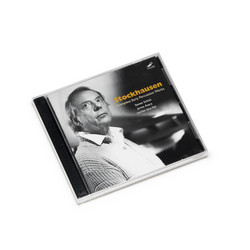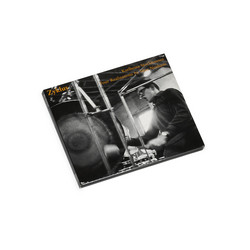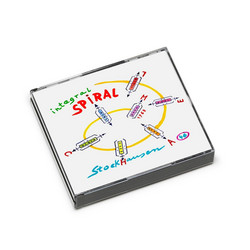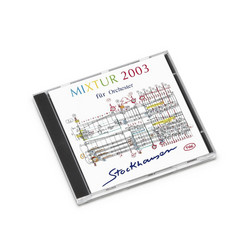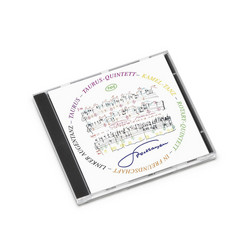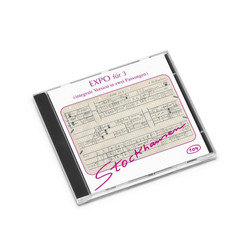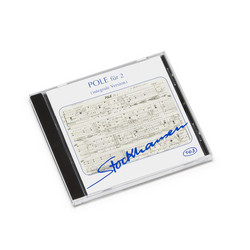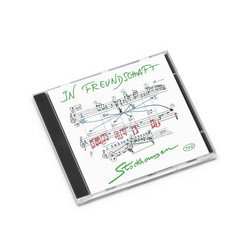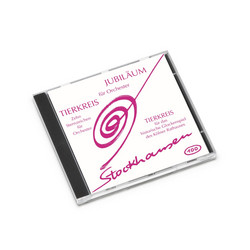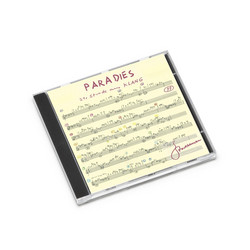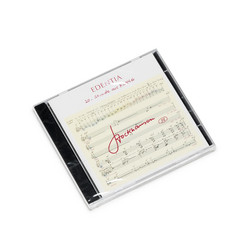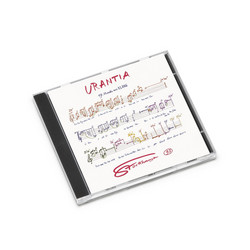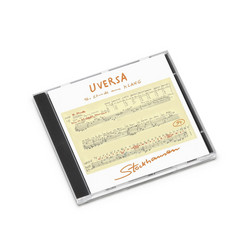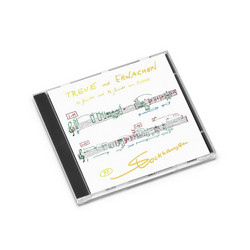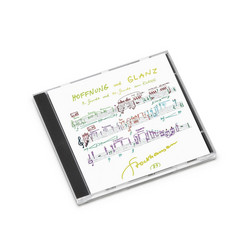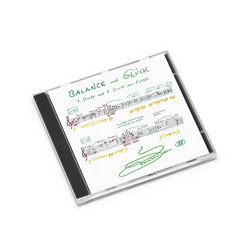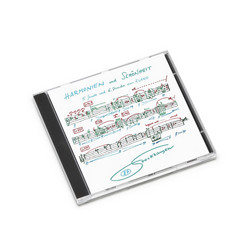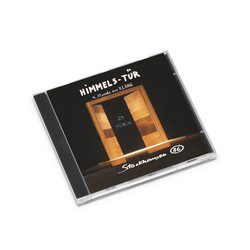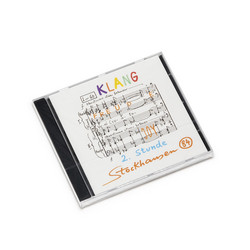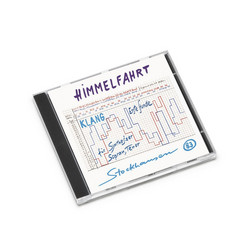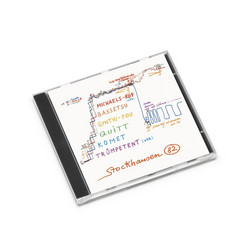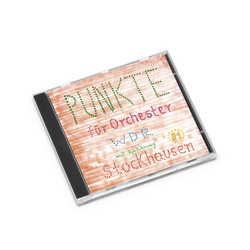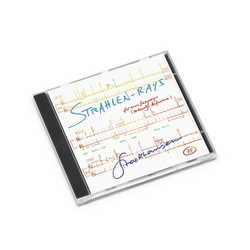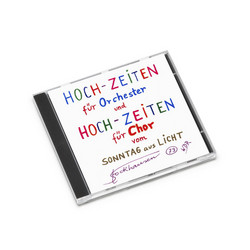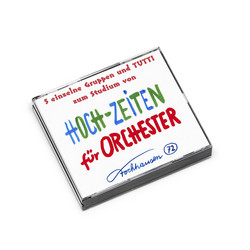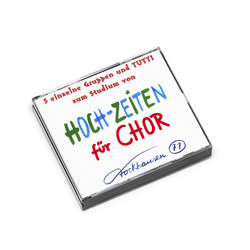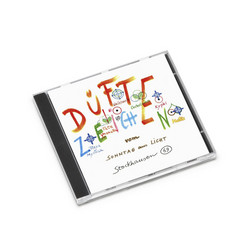Karlheinz Stockhausen
Momente (2CD)
Momente (Moments), written between 1962 and 1969, was Stockhausen's first piece composed on principles of modular transposability, and his first musical form to be determined from categories of sensation or perception rather than by numerical units of musical terminology. Comes with a 72-page 4-color big size booklet in German and English, plus a separate 36-page 2-color book with complete sung texts. "Momente for soprano solo, four chorus groups and thirteen instrumentalists” is dominated by three different kinds of moments, called K, M and D. K stands for “Klang” (timbre, verticality, regularity, homophony, percussion, male voices, noises). M represents “Melody” (horizontality, monophony, heterophony, randomness, pitches and noises equally mixed, trumpets and trombones, soprano solo).
D means “Durations” (diagonally [ vertical plus horizontal ] polyphony, irregularity [ “syncopated” ], pitches, electric organ, female voices). When planning a performance, after the moments and their order have been decided by the conductor, excerpts from certain moments are applied as “Einschübe”, i.e. “inserts”, into neighboring moments, to different degrees. This means that there are “strong” moments, which retain their absolute individuality by not having any inserts inserted into them, but who give influences to other moments by being cited inside them, and counter-wise that there are “weak” moments which have many inserts inside them, almost erasing their individuality. The possible subdivision of the piece does not stop here. The pure K-, M- and D-moments can be – and are – altered into additional moments by influences from other groups, indicated in the score by a small letter inside brackets after the big letter of the dominant moment, like M(k), D(k) and so on. When capital letters are placed aside each other, like MK or DM and so forth, it indicates moments wherein the group characteristics are united in an almost perfect balance. I’ll leave it at that, to indicate how extremely diverse this piece really is.
There are many more aspects for the curious listener to explore, and a good starting point is the 72-page CD booklet. Concerning the performers it can be noted that each of the four choir groups has at least three sopranos, three altos, three tenors and three basses. The choir members are not limited to vocal expression, but are also instructed to utilize felt and wooden beaters, to roll drumsticks on the rims and heads of tom-toms, to drum their fingers on cardboard tubes and to play simple instruments (pictured in the booklet) as well as to clap hands and stomp and shuffle feet, slap their hands on their knees, click their tongues and fingers and more… The score calls for a scale of vocal sounds from voiceless consonants to clearly audible vocals. Starting with voiceless exhalation the sounds required are defined as breathing, whispering, giggling, murmuring, speaking, calling, screaming, laughing and singing! " (Excerpt from Ingvar Nordin / Sonoloco extensive review)
